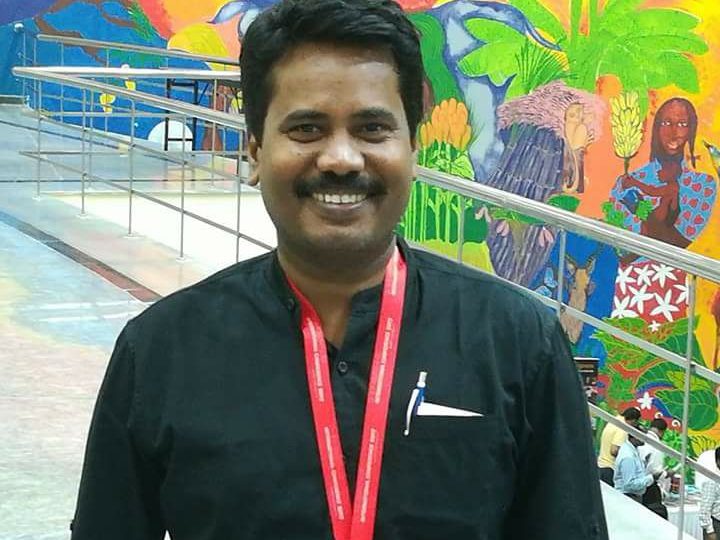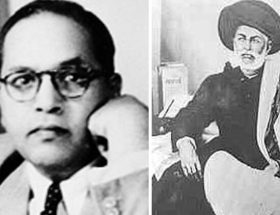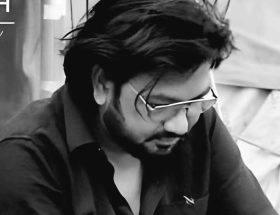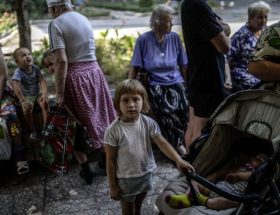Dr. Y. Srinivasa Rao
In India, while classical arts are for the rich and international audiences, and are practiced by the upper castes for fame, name and prestige, subaltern arts are for the rural population and practiced by the subalterns for livelihood and survival. Upper castes ascribed the ability to reserving everything that had value. They use their manipulative abilities to add value to art forms which do not posses such value. Such is the power of caste. It had acquired the ability of changing its DNA according to the time and context and most importantly, the custodians of caste have the inbuilt ability to reserve all that is useful, beneficial and valuable for themselves and leave the rest to the Sudras and Panchamas. Same is the case with art and culture. Culture in Hindu India is divided into Classical culture and Subaltern culture. While the former is created and practiced by the Brahmins and patronized and consumed by the Kshatriyas and Vaishyas, the latter was created and practiced by Sudras, Dalits and Adivasis but performed for upper castes. These two cultures exist separately and there is hardly any interaction between. Even after western cultural modernity came and put pressure on them, there never existed any need for them to come together. They fought the impact of western cultural modernity on their own and responded to it in multiple ways.
While the upper castes had the ability of relocating their classical culture from a space and locality where it is losing scene, the subalterns could not because they are subjected to marginalization. Yet, in one or the other forms, the subaltern art forms continued. Subalterns, mostly lower rung of Sudra and Dalit castes, entertained the upper castes and agricultural communities in rural and semi-urban India. Subalterns developed different art forms on their own, created musical instruments on their own and adopted local and regional stories, legends, stories of local deities, portions from epics and so on to be presented during seasonal cultural festivals, temple festivals and so on. In Andhra Pradesh, Telangana, Karnataka and Tamil Nadu, agricultural and industrial developments during colonial times created the forward castes: Sudras became landlords, rich peasants, industrial bourgeoise in the rural and semi-urban locations. But lives of half of the subalterns, especially Dalits, across these states have not changed much. They still suffer from objective poverty, face discrimination, depends on the forward castes for their daily existence, and occasionally faces social and economic boycott, and depends on the state for empowerment and so on. It is because of their dependence on the forward castes and caste Hindus, for whom they perform in the fields while working and on the stage during nights, has engendered new demands on them in terms of their performance as artists.
Burrakatha, Natakam, Tholu Bommalata (puppetry), Bagothula Kathalu, recording dances, Karagattam, Bommalattam, Kavadi Attam, Poikal Kuthira are some of the rural and semi-urban subaltern art forms. The content of the art forms did not remain the same after the new forms of entertainment like circus, exhibition and cinema appeared. The conditions of the subalterns have not improved to depend on the alternative sources of livelihood either. For many, their entertainment forms are their source of livelihood. Therefore, it is never easy for them to leave their art forms. Dalits have been entertaining rural and semi-urban India for long. They play music known as melam (band) at Hindu and Christian occasions of life. Hindus and Christains in India have numerous ceremonies: birth, initiation, baptism, initiation in to education, puberty (girls), marriage, celebration of pregnancy, naming of child ceremony, house warming ceremony, seemantham (celebration of pregnancy), Sasthipoorthi (second marriage of successful couple at 60 years) and death. In all these occasions, Dalits men and teenage boys are needed to play duppu, parai, chanda and so on. Without these instruments Dalits playing, not single occasion of Hindus and Christians would be complete.
From Decent to Dirty
On January 17, 2022, Andhra Pradesh Government issued an order banning 100 years old Chintamani Natakam written by Kallakuri Narayana Rao in 1920. It was about a courtesan attaining liberation through her devotion to Krishna. Objections of the Arya Vaisya community to the play is about the character of Subbi Setty, a trader from the Vaishya community, portrayed as a dark, short person speaking a funny language, who loses all his wealth visiting Chitanmani regularly. There is also vulgar comedy around him. This has been bothering the Vaishyas for a long time.
According to Sheik John Basheer, founder, Progressive Theatre Group, the play was written as a reformative intervention with a social messaging in it. But over the years, as several adaptations were made to make it more entertaining, particularly after the entry of recording dance (a cinematic dance branched out of folk dance in rural central Andhra), the play turned out to be downright vulgar.[i] This broad change started around the beginning of 1980s due to the domination of cinema as a glamour industry. Cinema was putting pressure on the artists who were making their livelihood from perform these art forms. Slowly, subaltern arts were losing their audiences if they were not adopting cinematic entertainment. Rural south India ,which was till then appreciating the clean dances, dramas and ballads on makeshift stages, started expecting subaltern artists to perform as some characters in films purely for entertainment.
There were two aspects which they were forced to adopt in erstwhile Andhra Pradesh: vulgar or sexual comedy, and sexual dance moves by couples dancing to film songs, primarily, in what were labelled as Recording Dances. Vulgar comedy was forced upon Burrakatha and in other such art forms too. In Tamil Nadu, Karagattam, an art form where a couple dance to the folk and film songs, was going through the same change. Its history could be traced backed 2000 years. Performed by a male, to invoke the rain goddess Mariamman, who dances from the river or some other water source to the temple with a pot full of water decorated with flowers and a wooden parrot on the top. The specialty of this art form was that the dancer balances the pot on the head while dancing and the water is not supposed to be spilled.
In course of time, Karagattam branched out into Shakti Karagattam performed at temples and Atta Karagattam performed for entertainment. The latter version, of course, gradually transformed from a religious art to mere entertainment performed by males and females separately and as couples as well. Vulgarity started penetrating into Burrakatha, Karagattam and Recording Dances gradually. In rural Telangana and in Andhra, people from OBC and Dalit communities form dancing troupes to tour around the state for performances during festive occasions. They were mostly owned by people from OBC castes with dancers, both male and female, who were lookalikes of popular film stars and trained to dance on the stage.
From 1950s to 1980s, drama, Burrakatha, Recording Dance and Karagattam troupes were owned by the caste Hindus. Lead actors, story tellers, supporting singers and dancers were mostly touchable Sudras. From 90s, they gradually left them to Dalits. Their presence is very less now. Big change in the recording dance was its transition from staging public dances of popular cinema songs of film stars like Nandamuri Tarakarama Rao, Akkineni Nageswara Rao, Ghattamaneni Krishna, Konidala Sivaprasada Rao aka Chiranjeevi to half-naked and naked dirty dances done mostly by young and middle aged women and sometimes couples, exclusively for rural men.
Till the beginning of 21st century, the Recording Dance which had a history of only some fifty years only vulgar dance moves was present while male female dancers were dancing to popular film numbers. It was towards this time, vulgarity was becoming a norm. Around this time, entertainment in the rural Indian was dividing into two broad lines: one, the indoor entertainment for women and children where television was the main source of entrainment and two, outdoor entertainment for men where Recording Dance and Karagattam, are becoming a sort of rural rave parties i.e., dirty dances performed on the stage by young girls and couples. Not all these programmes are dirty, though. After the penetration of Television, almost all the traditional art forms were under stress. So, outdoor entertainment in rural India was transforming into a private entertainment space exclusively for men like that of club and bar in the cities. In both locations performers are the subaltern male and female.
In 1988, the trend setting Telugu film director Vamsy had made Sri Kanaka Mahalakshmi Recording Dance Troupe. It was in the comedy genre, and he presented it as an entertainment with not an iota of vulgarity visible. In fact, in the beginning there was no vulgarity in folk dance and recording dances. The movie reflected the reality of the recording dance troupes in East Godavari district of Andhra Pradesh.
Now agents emerged. They manage dancers and pay the contract fee at the end. They are the mediators between those who book dancers and the dancers. It is through them that men demand females to perform erotic moves and talk dirty. Though the programmes like Burrakatha, Recording Dance and Karagattam are arranged to be performed at temples, they are no more about spirituality. They are purely for entertainment of the rural men in India. Viajaya, one of the dancers talking about how Karagattam transformed, said: ‘it is young women thing now. Audience once liked curvaceous women in their 30s, now they prefer pubescent teenagers in short skirts’. Though they perform difficult tasks like balancing bottles on their bodies, blowing fire and dancing on water filled plates, what attracts men more is the short skirts which are worn on the demand of the audience. They have to face drunken man jumping on them and pulling their dresses and forcing them to dance with them.
Vijaya is uncomfortable about the fact that is not art anymore. People don’t respect it as art. Their dance is not what is admired, their short skirts, their verbal vulgarity, erotic moves (if a couple is performing) and their availability for the male spectators to touch them inappropriately is what is admired. The evolution of the Karagattam dress indicates who is responsible for the vulgarity and immorality the Karagattam dancers are accused of. After the entry of women into the art, first, women dancers were wearing saris until the 1970s and 80s; pants up to the knees came in around 90s and skirts from 2000. But now they are asked to wear short skirts and also remove the cloth that covers their hip. All that matters to the male spectators is whether they are performing erotic/sexy moves or not. This includes even touching the dancers’ genitals in public. This is very well realized by the dancers.
Attakari like Vijaya and Vennila realise why their art is not respected as it is supposed to be. It is the caste of the art form that determines the degree of respect it gets from the general society. Bharatanatyam, appropriated from the Sudra women, by the Brahmin women performers commands great respect. Vijaya, while pointing out the general society’s discriminatory attitude towards the art of the subaltern, said: ‘while the men and women who perform Bharatanatyam dance on lofty stages and receive applause from the elite society, we (Karagattam dancers) dance on the muddy ground in solidarity with those who have been cast out.’[ii]
Jyothi Mani, another Karagattam dancer, elaborated in her interview to a journalist that male audience approaches dancers even ask for sex for a price. If dancers speak back harshly, men take revenge by troubling them with their sexually loaded comments when dancers perform. Throughout the night they have to bear torture of these men. Apart from this, they go through body pains for performing throughout the night. She also pointed out regional variation in the attitude of male spectators in Tamil Nadu. Spectators in Kanyakumari, Ramanathapuram and in some places of Tirunelveli do not demand oral vulgarity, erotic and sexual moves. But men from Puthukotai, Salem, Madurai and Tanjavur do it.
In 2019, temple administration of Arulmigu Poorna Kaladevi Puskaladevi Sametha Sri Kodungal Potri Ayyanar Kovil, Chinna Kivilankulam Village, Shakaran Kovil Taluk in Thiruneveli approached the Madurai Brach of Madras High Court for permission and protection to conduct Karagattam from 10 pm to 1 am on the occasion of Maha Shivaratri festival. One would wonder why a permission of the court and police is needed to perform a popular folk dance at a temple. But this is where the problem lies. The hypocrisy of the Hindu society is that, on one hand it allows the art form forced to be corrupted by its own people to be performed, on the other hand it accuses the Karagattam dancers of corrupting it. Karagattam is a subaltern art form. It is alive today, though modified form because of subalterns for many of whom it is livelihood. By letting to it transform into an art that is to be performed under the police protection, the caste Hindu society is suggesting that subaltern art forms, if not controlled would become immoral and unethical. This is the hypocrisy.
Delivering the judgment, the judge Seshasayee, directed the police to grant permission to the petitioner to perform the programme in a disciplined manner by young artists with full dress cover code and it suggested that the programme be closed by 11 pm. It also further specified that there should not be any kind of obscene dance or vulgar dialogues during performance by any of the participants and double meaning lines should not be played as they would spoil the minds of students and youths.[iii] In actuality, it is other way around. It is the rural and semi-urban male spectators, who are mainly young, who demand vulgarity. Unfortunately, neither the bureaucracy nor the general society is interested in understanding it. Instead, they choose to crucify the helpless subalterns and criminalize their art forms.
There are state government recognized male Karagattam dancers who get Rs. 1000/ per performance and are provided with identity cards and invited to perform in state sponsored programmes. They claim professionalism over the art form and are critical of entry of women into the field who according to them women are illiterate and untrained. Mr. S. Malaisamy who has been in it for long and was trained at the Tamil Nadu South Zone Regional Folk Dance Centre, Madurai, is critical of this change. He along with T. Thavamani and M. A. Zaffer Hussain are trying to keep the tradition alive.[iv] Malaisamy also laments about the discrimination Karagattam faces compared to Bharatanatyam. He observes that the required support and patronage is not coming from government and the general society.
Difficult Times
A woman Karagattam dancer in her twenties speaking to journalist from Behindwoods, a portal for Tamil movies reviews, news and culture, was lamenting about the way they were treated. She says that she was followed by men when she goes to bathroom, they touch her inappropriately, and she was not allowed to sit on the porch. As soon as she gets into the attire of Attakari, men start throwing vulgar and sexually loaded comments and even drinking water is not provided when needed. In the same interview, Rani, a woman in her fifties and a senior Karagattam dancer who trained the young dancer, says that she is in the profession from her childhood days and it is what her family profession has been. Women dancers are forced to wear glamourous dresses or short skirts, they are forced to touch male spectators, and they are forced to dance with male spectators which are not usually allowed. If they don’t do what the male spectators or organizers are asking, the organizers threaten them with a cut in the contract fee.
She further said that they struggle to get three meals a day, and sometimes, they get to eat only once a day. They do not get rented houses as the profession does not offer them a regular income; most of them are widows who make a living out this profession which offers only six months of work in a year.[v] It is not that they chose to be in the same profession forever. But people who knew them do not believe that they can do any work other than dancing. She questions this sort of attitude of the general society. In other words, it is the general society which is forcing them to be in the profession. Jyothi Mani, despite facing sexual advances and an unpromising future, still believes that it is her right to talk about the art, its contemporary manifestations, predicaments and its future prospects. It is to feed the family, to pay power bills and to educate children that she choose the profession, she said. She performed when six months pregnant and since Karagattam offers only six months of work, many like her had to dance even during their menstruation. They face caste discrimination. Most of the Karagattam dancers are from lower rung of Sudras and Dalits who are landless. So, they are not provided with decent lodging by the organizers. Makeshift huts for make-up are built temporarily. In some villages, if dancers sit on the porch of upper caste/caste Hindu homes, the owners drive them away and clean the porch with water.
Dancers of Recording Dance in Andhra too are facing similar troubles. Most of the recording dancers are from central Andhra. In fact, there are dance schools which train teenagers and women in the 30s. In Rajamahendravaram (Rajahmundry), East Godavari, there are fifteen schools run by senior dancers. Like in the case of Karagattam, these dancers too are from lower rung of Sudras and Dalits. During the lockdown, they faced hardships as there were no dance programmes. K. Kasi Viswanath, officer bearer, Twin Godavari Districts Dancers and Dancer Masters Association lamented that for five months during lockdown the dancers faced hardships as college students who book them for annual functions did not. Dancers perform for three hours for twenty songs and charge Rs. 1,000/- per song, be it a folk, cine or classical song. Charges might vary according to the status of the customer. Viswanath also urged the government to support the artists by using their services in propagation of government welfare schemes.[vi] Since most of these programmes turned out to be vulgar, a decade ago the Andhra government imposed a ban on them. It is not the intention of the dancers to dance half naked. It is because of the demand from the male audience.
Thus, most of the subaltern arts surviving in the margins and surviving on the mercy of the general society are being forced to go through undesired changes where humiliation, disrespect, dishonor, indignity and ill-treatment are higher than the respect for the art and artist. Unfortunately, the art of the subaltern always faces this rejection while the art of the upper castes in India, which is identified with the national culture, enjoys unlimited patronage. Therefore, if the subaltern art forms are acquiring undesirable characters it is due to the spectator who wants it that way but never because of the the performer.
~
Notes
[i] Balakrishna Ganeshan, Why the Andhra Pradesh Government Banned a-100- year- old Play, https://thewire.in/caste/why-the-andhra-pradesh-government-banned-a-100-year-old-play
[ii]Divya Karthikeya, Karakattam: A Folk-Art Languishing in the Web of Morality, https://www.thenewsminute.com/article/karakattam-folk-art-languishing-web-morality-47443
[iii]Maridurai vs The Superintendent Of Police on 27 February, 2019 (indiankanoon.org)
[iv] Soma Basu, A Care for Karagatta?, https://www.thehindu.com/features/metroplus/society/A-care-for-Karagattam/article11642228.ece
[v]https://www.youtube.com/watch?v=udydAn8m2K4
[vi]https://www.thehansindia.com/andhra-pradesh/lockdown-blues-dancers-left-without-work-for-last-5-months-in-rajamahendravaram-636735?infinitescroll=1
~
Dr. Y. Srinivasa Rao teaches history at Bharathidasan University, Tiruchirapalli, Tamil Nadu.










